A Comprehensive Review On The Anatomy of a Cannabis Plant
As a commercial cannabis grower, one of the alluring benefits of installing an indoor vertical farming system is your direct contribution to reducing the overall carbon footprint.
As you utilize an indoor grow system in a pre-urban or urban area, you serendipitously reduce CO2 emission sourcing from the transportation of cannabis to urban populations.
Aside from that, you’ll enjoy a bountiful harvest all year round as your indoor grow system will allow you to adjust continuously for optimum conditions.
But optimum conditions aren’t the only secret source as far as getting a bountiful cannabis harvest goes. As a commercial cannabis grower, you’ve probably had your fill of the feminization of cannabis seeds.
Growing feminized (sinsemilla) cannabis ensures the plant focuses all its energy on producing resinous, rich, smokable buds free from seed.
With such an intricate process focused on only one part of the cannabis plant, it can be easy for growers to overlook all the other parts that make up the cannabis plant anatomy.
From buds to trichomes, nodes, leaves, and stems, down to the roots, all these parts play significant roles in the well-being of your cannabis plant. Damage to any of these parts could prove detrimental to your cannabis plants and affect your overall harvest.
This guide will detail all these essential components that make up the anatomy of the cannabis plant and give health check indicators.
We’ll also detail the different genders of cannabis plants to understand their commercial significance. Finally, we’ll give you a rundown of other benefits of our high-density mobile, vertical grow rack shelving systems for the vertical farming industry.

Cannabis Plant Anatomy- The Cola
Cola (bud site) is a cluster of buds that grow tightly at the top of the marijuana plant. However, you can find cola through your cannabis plant, depending on how well you top your marijuana plant. The main cola that grows at the top of the cannabis plants is usually referred to as the apical bud.

Cannabis Plant Anatomy – Flowers
Better known as buds, these are the magnum opus that makes cultivating cannabis worthwhile. In cannabis plant anatomy, flowers are where the essential cannabis components —cannabinoids, and terpenes—are concentrated.
These compounds make cannabis such a health and wellness powerhouse, aside from inducing the psychoactive effect making marijuana such a hit.
A healthy cannabis flower usually develops a deep orange pistil as the harvest time looms closer. Contrarily, unhealthy flowers take on a mushy gray color.
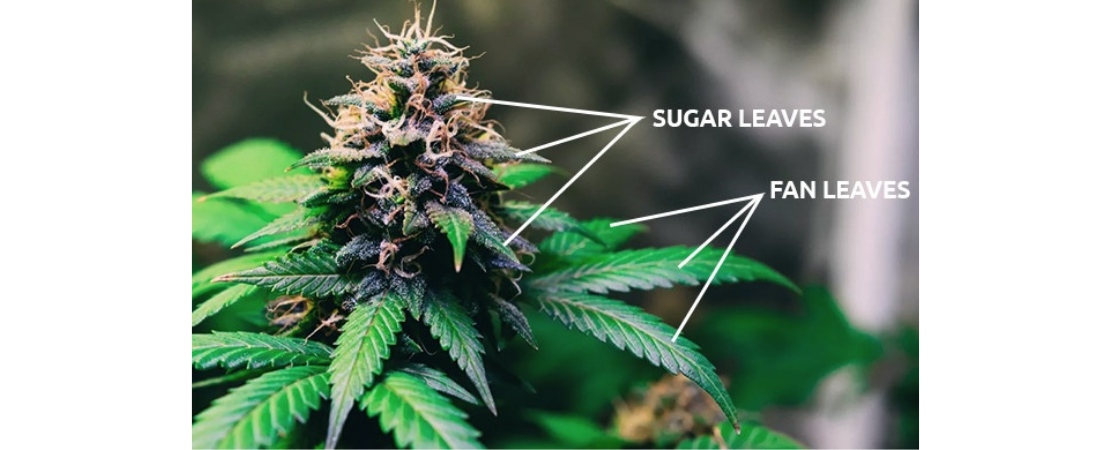
Cannabis Plant Anatomy – Sugar Leaves
Between and around the cannabis flowers or buds, you’ll spot small sprouting leaves covered in sugar-like crystals. These are what are known as sugar leaves.
It won’t be easy to see the leaves from a distance, but as you take a closer look at your buds, you’ll be sure to spot them glittering like gems on display.
Sugar leaves, like buds, contain cannabinoids and terpenes. You could smoke them and get high, but they’ll irritate the throat as they produce more smoke than buds.
For this reason, sugar leaves are usually trimmed during harvesting and are used to make cannabis derivatives like concentrates and edibles.
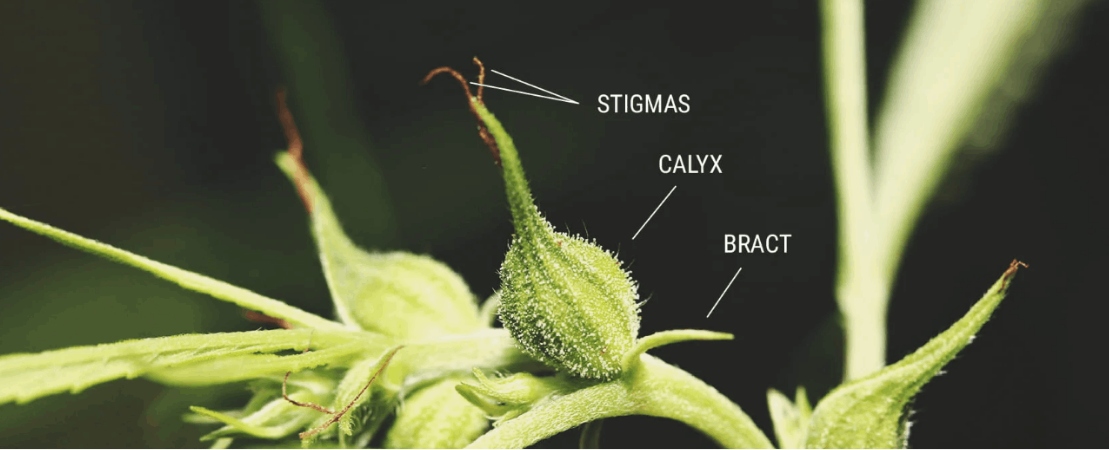
Cannabis Plant Anatomy – Bract and Calyx
The cannabis female reproductive system is contained in the bract. The bracts are green tear-shaped leaves that are generously sprinkled with resin glands.
For this reason, the highest concentration of cannabinoids and terpenes is found in these areas of the cannabis plant. Therefore, bract significantly impacts the potency of a cannabis plant.
On the other hand, the calyx is a translucent layer that forms at the base of the bract and is not visible to the naked eye.
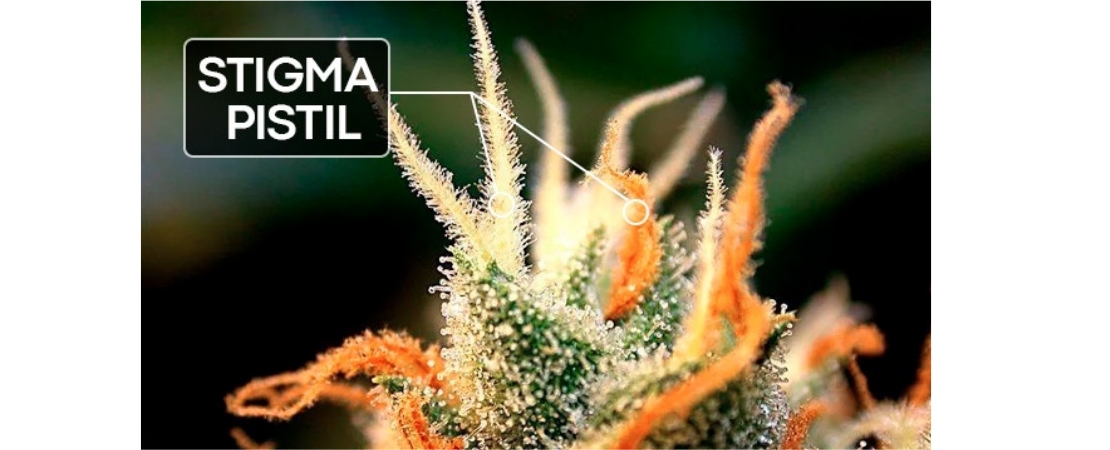
Cannabis Plant Anatomy – Stigma and Pistil
Cannabis flowers house the main reproductive component of the cannabis plant called the pistils. Pistils grow from one ovule that develops protruding vibrant hairlike structures called stigmas.
In non-sinsemilla cannabis plants, the stigma collects pollen from male cannabis plants to fertilize female cannabis plants and produce seeds.
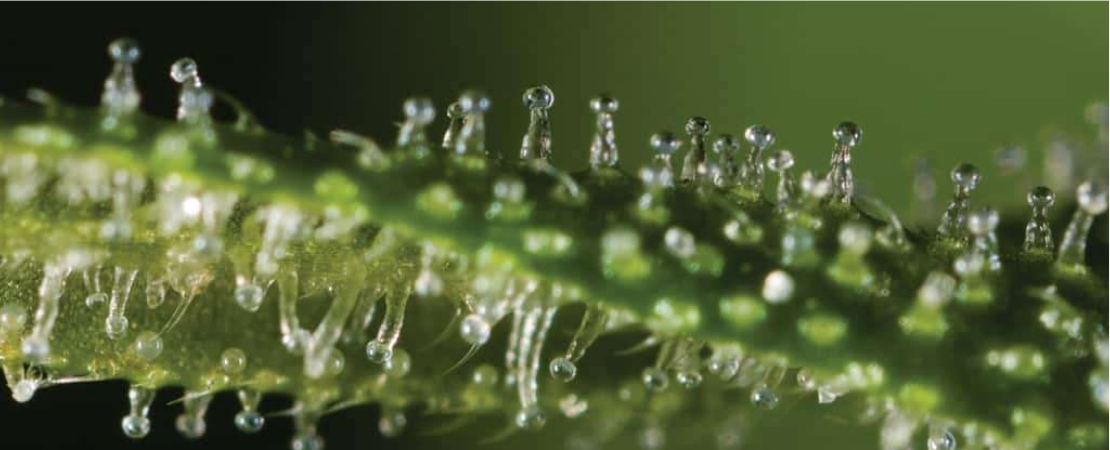
Cannabis Plant Anatomy – Trichomes
Trichomes are the literal cream of the cannabis plant anatomy. You can see them throughout your cannabis buds. They appear like a sticky, milky white resinous layer that covers the buds, calyxes, and sometimes stems of the cannabis plant.
Trichomes possess resin glands that produce aromatic oils called terpenes and cannabinoids such as THC and CBD.
Plants typically develop a resinous layer of trichomes to protect themselves from harsh environmental factors and predators.
However, scientific studies have revealed just how medically significant these plant self-defense compounds can be to humans.
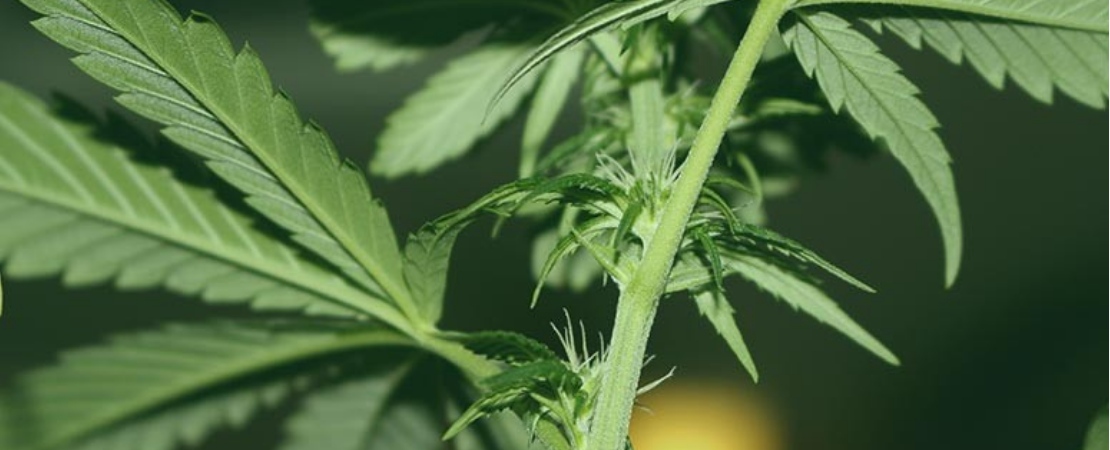
Cannabis Plant Anatomy – Node
A node is a point of intersection from where a branch grows off the main stem, or a sub-branch grows off the main branch.
Sometimes you can spot fan leaves, flowers, and buds growing directly on a node.
The internodal spacing is the space between nodes. This is usually a great indicator of how tall your cannabis plant will grow.
The male and female parts of the cannabis plant usually sprout from the nodes between the main stem and a branch. Usually, the male plants will develop round balls, which will grow into sacks, while the female plant will develop flowers with pistils.
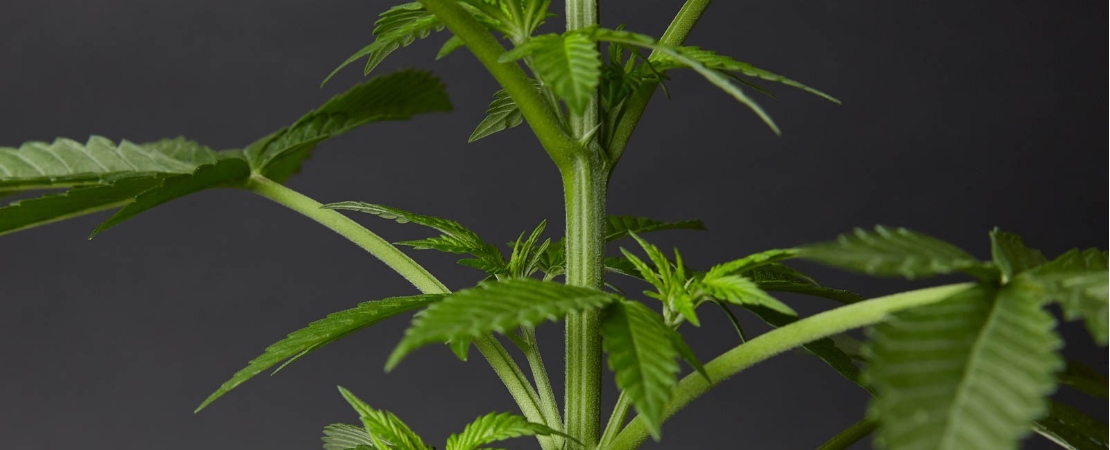
Cannabis Plant Anatomy – Stem
The stem is the literal and figurative backbone of the cannabis plant. From this structure, all other parts that form the cannabis plant anatomy grow.
Also, the stem supports the distribution of fluids and nutrients throughout the cannabis plant.
Though stems don’t form the final cannabis product meant for consumption, they can be used to produce other cannabis products like hash and cannabutter or to create yarn and twine.
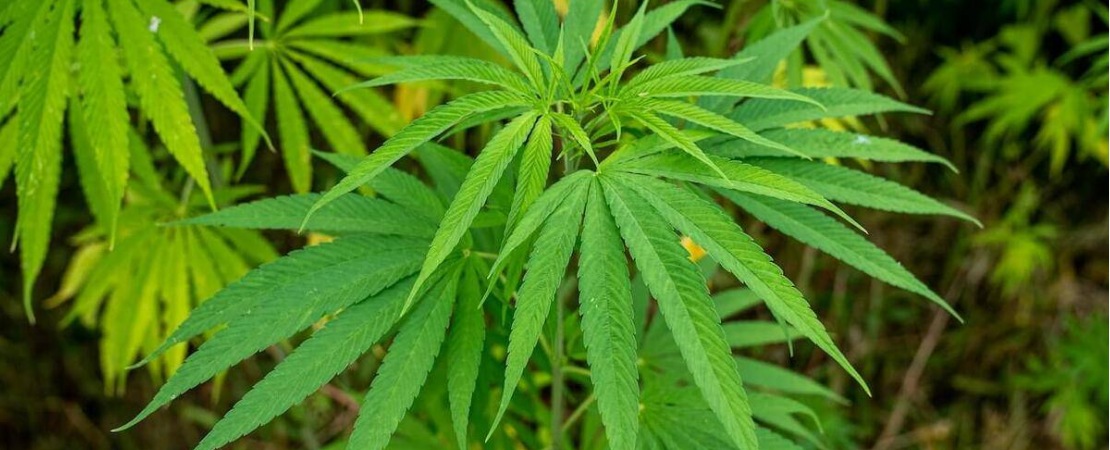
Cannabis Plant Anatomy – Fan Leaves
Did you know that the ubiquitous cannabis leaf symbol used to represent marijuana is actually a fan leaf?
Fan leaves are large green leaves whose primary function is to generate food for the cannabis plant as a result of photosynthesis.
Even though their use as a symbol for marijuana will have you believe they form the smokable part of cannabis, that couldn’t be further from the truth.
Fan leaves are discarded during cannabis harvest. They contain little to no cannabinoids and produce a lot of smoke, significantly irritating the throat.
Signs of Healthy Cannabis Leaves
- Vibrant green leaf color. No discolored scars anywhere on the leaves
- No drooping, curling, or wilting. The leaves are firm and stretch up toward the light source
- An abundant number of leaves

Cannabis Plant Anatomy – Roots
Cannabis roots project towards the growing medium from the plant’s central stalk. The primary root is called a tap root, from which lateral roots and root hairs grow.
The main task of the entire root system is to absorb water, oxygen, and nutrients so that the cannabis plant can grow healthy and strong.
Signs of Healthy Cannabis Roots
- Appears white with little to no browning
- No signs of mushiness or brown patches that would indicate root rot
- No sign of tangle or rootbound
Cannabis Plant Anatomy – Female vs. Male Marijuana Plants
Cannabis is a dioecious plant. That’s to say female and male productive organs appear in different plants.
Unless you get specialized feminized seeds, it can be hard to tell whether a particular plant is male or female until it reaches maturity and begins to develop its reproductive organs.
You can usually spot these organs before they become functional during the pre-flower stage. When examining the notes, you’ll spot tiny sacs or round balls on the male cannabis plant and two brackets on a female cannabis plant.
During the flowering stage, the tiny sacs will develop pollen sacs to spread pollen, while the female plants will develop stigmas that catch pollen for fertilization.
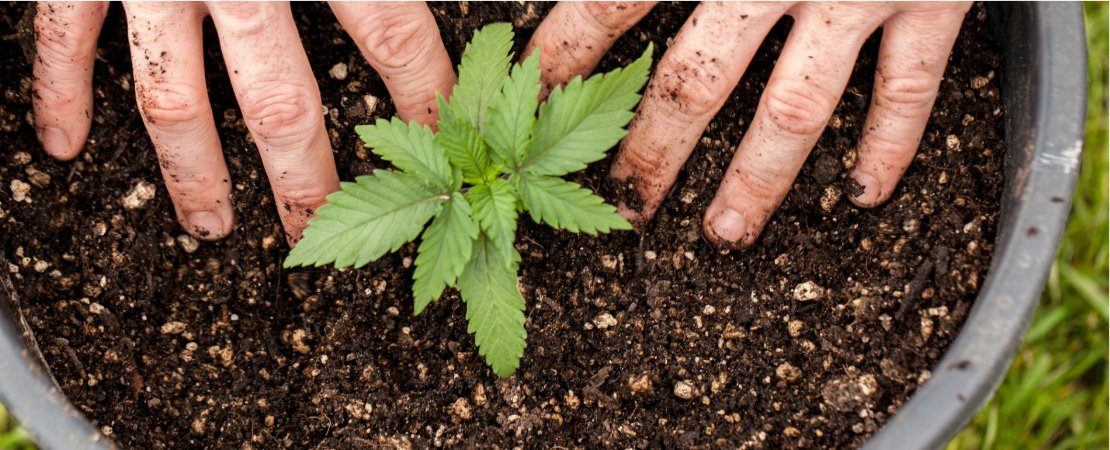
The Significance of Growing Your Cannabis in Vertical Growing Systems
Now that you know all the signs of a healthy cannabis plant, our hydroponic trays are the best flats for growing your cannabis. They make monitoring your entire plant from the cola down to the roots significantly more accessible to ensure it’s healthy throughout the growth cycle.
Additionally, unlike traditional farming which needs fertile arable land and only utilizes horizontal space, our vertical grow racks maximize any space such as skyscrapers and warehouses in any climate.
Another significant benefit of installing our mobile vertical grow system is the exponential increase in income you’ll enjoy.
From saving money on transport and operation costs—including labor and water—you’ll be raking in some serious cash from now exponentially improved cannabis harvest.

Maximize Your Cannabis Yield With MMI Agriculture Vertical Growing Solutions
Ready to take your cannabis farming system to the next level? Contact us. At MMI Agriculture, we provide mobile vertical farming solutions guaranteed to double or even triple your cannabis yield.
For home growers, we offer tabletop caster units. Bonafide commercial cannabis growers looking for fully integrated solutions can benefit from our mobile carriages or vertical grow racks.
No matter your vertical farming solution needs, we have a line of products guaranteed to stand the test of time and ensure a significant return on investment.
Wherever you are in America, our installation crew is available to ensure all your systems are properly installed and running correctly.
That’s not all. Our 10-year warranty covers both the equipment and labor you get from us.

